
Parts of an Elephant YouTube
The elongated elephant's trunk measures between 2 and 3 meters long, and is perhaps the most important part of the elephant's body - specialized to help the animal in their fight for survival. An elephant trunk has no bones, a small amount of fat, and close to 40,000 separate muscles (compared to 600 muscles in the entire human body).
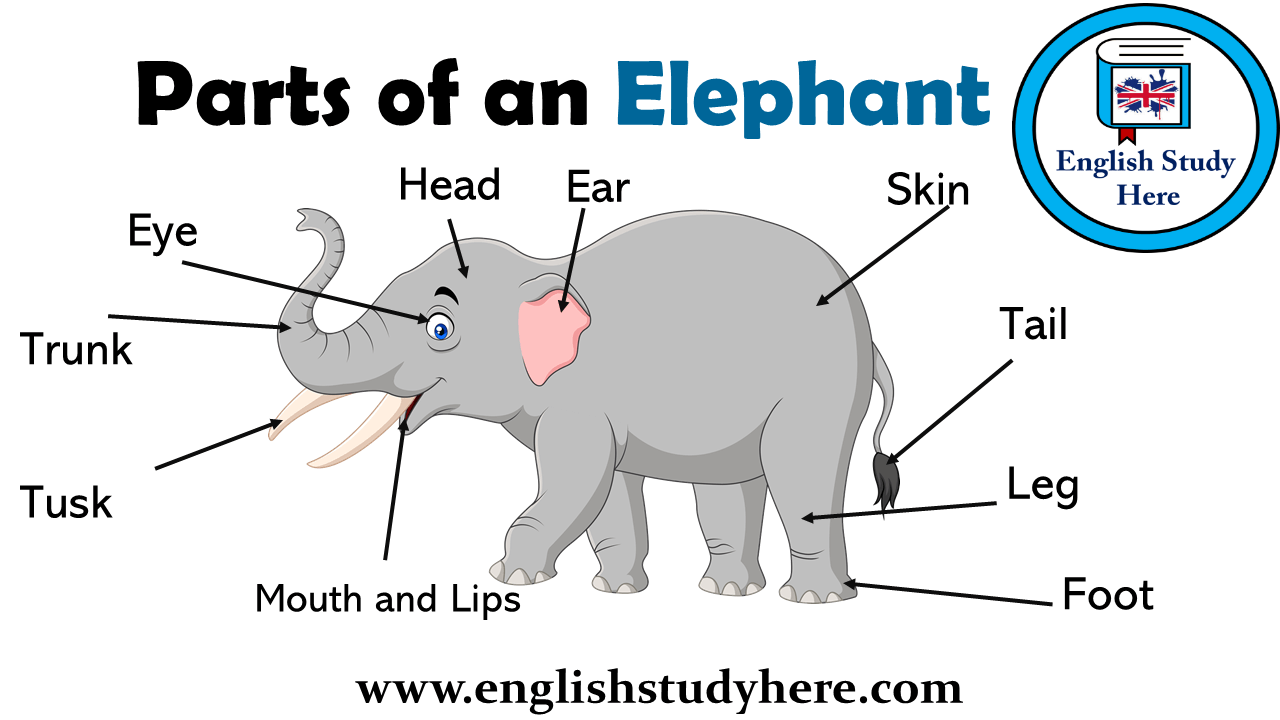
Parts of an Elephant Vocabulary English Study Here
Elephant Parts. Elephants are the largest grassland animal in the world. They can hear with their feet and live an average of 70 years. Trunk. An elephant's trunk is one of its most distinctive features. It is a long, muscular appendage that serves many functions, including breathing, smelling, touching, grasping, and making sounds.

body parts of an elephant Stock Photo Alamy
The skin of an elephant is as thick as 2.5-4 cm on the head and back. The colour of the skin is greyish black. De-pigmentation is noticed on the fore head, upper portion of the trunk and the ears. Although the skin is dry due to the absence of sweat gland, it is soft and supple.
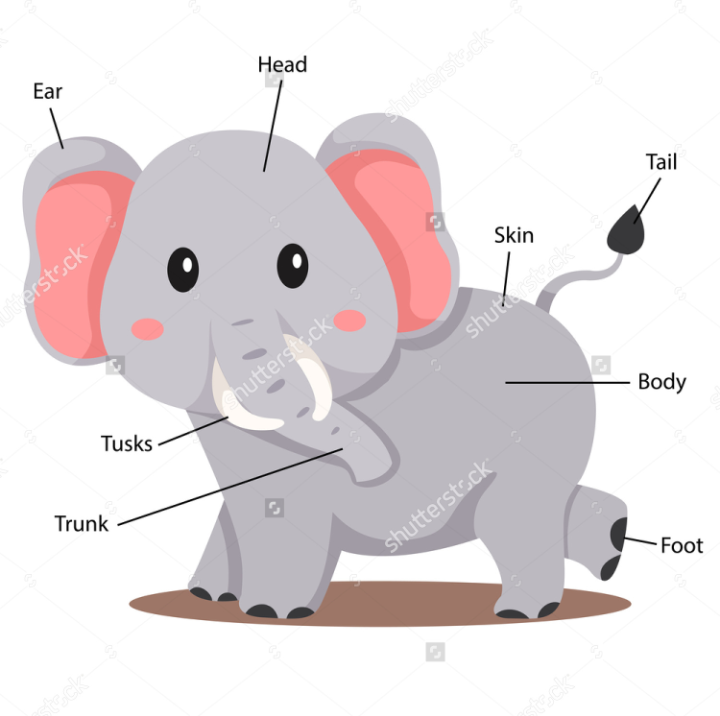
Elephant Parts Alchetron, The Free Social Encyclopedia
Discover the intricate details of elephant anatomy, revealing nature's fascinating blend of strength, adaptability, and grace. Explore now! Discover the Elephant's Anatomy: It's nothing like any other animal Consider this your hub for all information related to the awe-inspiring anatomy of elephants. We'll explore their remarkable trunks, towering limbs, intricate bone structure.
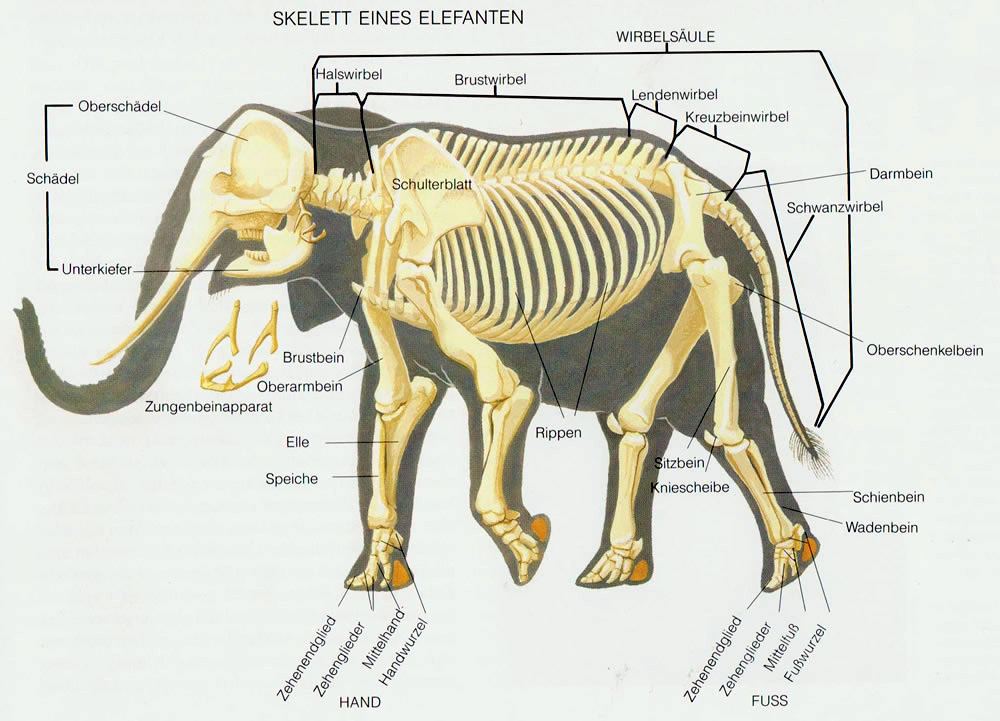
Anatomy of the elephants Upali.ch
An elephant's trunk is actually a long nose used for smelling, breathing, trumpeting, drinking, and also for grabbing things—especially a potential meal. The trunk alone contains about 40,000.
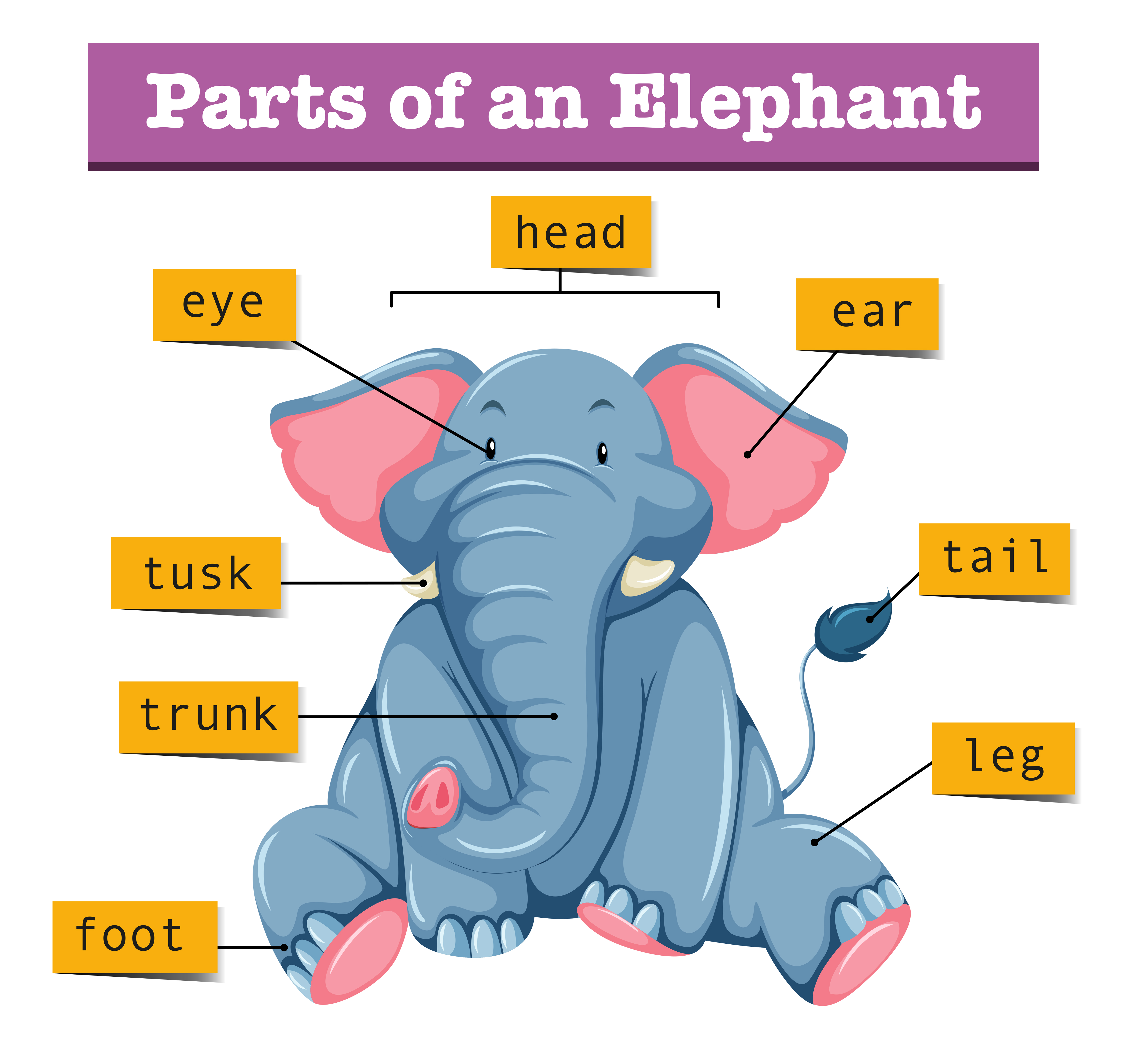
Diagram showing parts of elephant 455421 Vector Art at Vecteezy
An elephant's skull, parts of which are six inches thick, can withstand the force of tusks, trunk, and head-to-head collisions. The back of the skull is flat and spreads out to create arches that protect the brain in every direction. The cranium is filled with honeycomb-like spaces, which makes the large head relatively light-weight..

Different parts of wild elephant Royalty Free Vector Image
Elephant - Reproduction, Life Cycle: Elephants live in small family groups led by old females; most males live in bachelor herds apart from the females. They migrate seasonally according to the availability of food and water. The Asian elephant has been important as a ceremonial and draft animal. Asian and African elephants are listed as endangered species.

Parts of an elephant Elephant, Thick skin, English vocabulary
Weight. 4-6 tons. Length. 18-24 ft. Elephants are the largest land mammals on earth and have distinctly massive bodies, large ears, and long trunks. They use their trunks to pick up objects, trumpet warnings, greet other elephants, or suck up water for drinking or bathing, among other uses. Both male and female African elephants grow tusks and.

Diagram showing parts of elephant 431440 Vector Art at Vecteezy
Blind men and the elephant, 1907 American illustration. Blind Men Appraising an Elephant by Ohara Donshu, Edo Period (early 19th century), Brooklyn Museum. The parable of the blind men and an elephant is a story of a group of blind men who have never come across an elephant before and who learn and imagine what the elephant is like by touching it. Each blind man feels a different part of the.
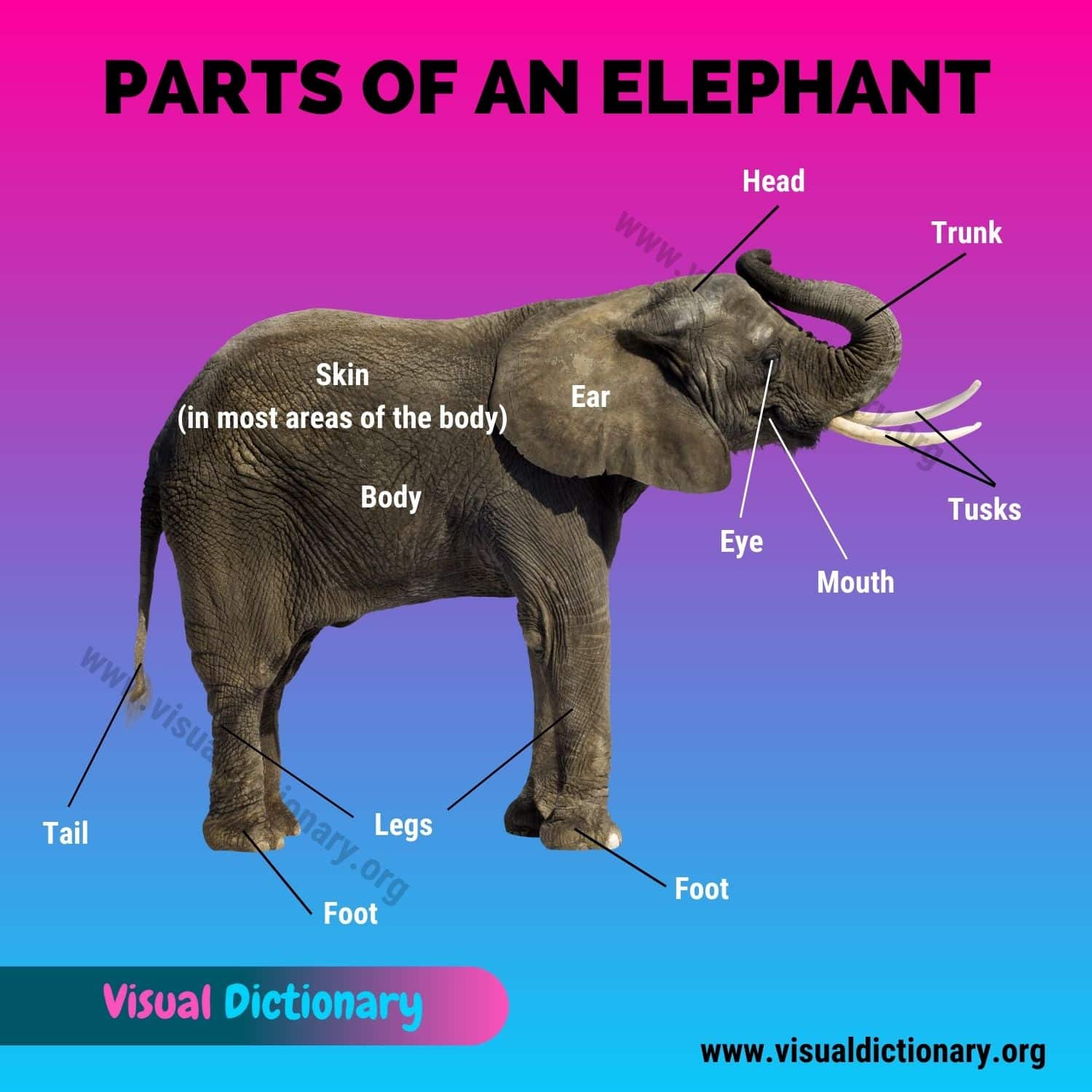
Elephant Parts Great List of 12 Parts of an Elephant Visual Dictionary
The ban allowed the elephant to recover in parts of Africa. In February 2012, 650 elephants in Bouba Njida National Park, Cameroon, were slaughtered by Chadian raiders. This has been called "one of the worst concentrated killings" since the ivory ban. Asian elephants are potentially less vulnerable to the ivory trade, as females usually lack.

Diagram showing body part elephant Royalty Free Vector Image
Parts of an elephant For KidsElephant Body Parts with animation for explain each part of elephant ,Animal Body Parts for Kids,RhymsoTVKidsSubscribe to our C.

Elephant Parts Elephant Body Parts with Pictures • 7ESL
An elephant will use its tusks to provoke aggression or to lift a baby elephant out of a mud wallow. The rubbing together of ears shows affection. Depending on how the elephant moves and uses its body parts depicts the mood of the animal. Such moods and body movements show if the elephant is angry, happy, anti-predator, parental, excited or sad.
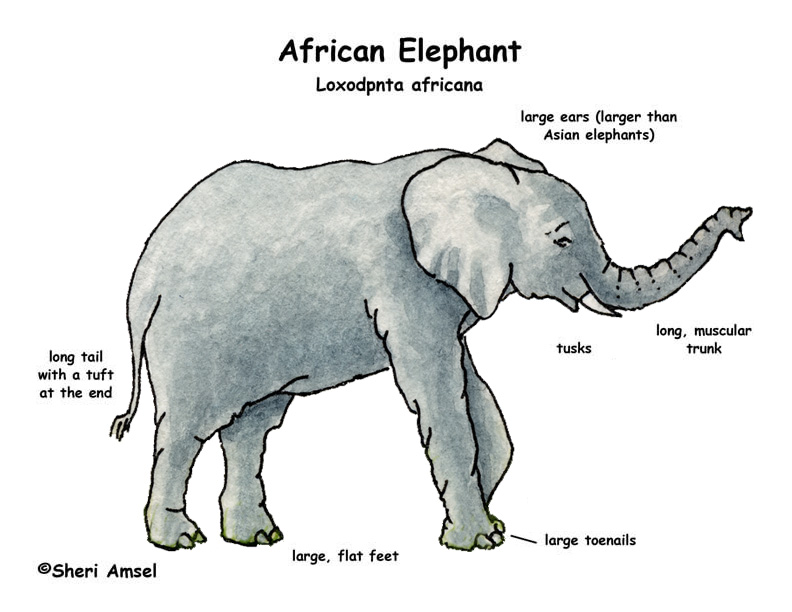
Elephant (African)
Parts of an Elephant with Examples. Learn these parts of an elephant to enhance your English words about animal parts in English. Eyes. The elephant's eye is positioned on the side of its head, giving it excellent peripheral vision. Ears. The elephant's ear is one of the largest and most recognizable features of its anatomy. Trunk

Download Elephant Png Clipart Body Parts Of An Elephant, Transparent
Elephant Body Parts: Ears. The ears of an elephant are almost 1/6th of the entire size of an elephant's body. It is one of the main elephant body parts. The main function of the ear is the cooling mechanism that they have. There is an elaborate network of tiny blood vessels present in that part of the body and it is completely visible in the.

Elephant Parts Elephant Body Parts with Pictures • 7ESL
Elephant Parts is a collection of comedy sketches and music videos made in 1981 by Michael Nesmith, formerly of the Monkees.Nesmith produced the video through his company Pacific Arts. Elephant Parts is one hour long with parody commercials and comedy sketches, and features five full-length music videos, including the popular songs "Rio" and "Cruisin'", which featured wrestler Steve Strong and.

Elephant Body Parts Labeled
Elephantidae is a family of large, herbivorous proboscidean mammals collectively called elephants and mammoths.These are large terrestrial mammals with a snout modified into a trunk and teeth modified into tusks.Most genera and species in the family are extinct.Only two genera, Loxodonta (African elephants) and Elephas (Asian elephants), are living. The family was first described by John.